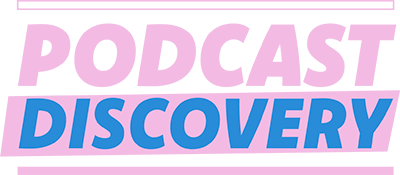There’s a lot of talk about YouTube being the biggest platform for podcasting. This might be strange if most of your own consumption has been through audio apps like Apple Podcasts and Spotify. Do people really listen to shows on YouTube?
Some audiences, particularly (though not exclusively) younger ones, think of a podcast as people talking around a microphone, and for many of them they see this happening on their YouTube feed. Indeed, much of their media consumption has been through YouTube for a number of years, whether that’s watching content creators or traditional media and now some of those types of shows are ‘podcasts’. They subscribe to these shows alongside their other favourites. They’re not thinking of YouTube as a podcast app, it’s just a content app that has some podcasts. At the same time, a decent number of these people don’t use an audio app for podcasts at all, so YouTube’s the only place they consume them.
Often the data shows that consuming a podcast on YouTube doesn’t reduce the number of listeners your get on other apps. So putting your show on YouTube potentially reaches a different audience. It doesn’t cannibalise what you’ve already got.
To capture that audience and do well with them, you need to behave like the other creators they watch. So what does that look like?
- Well, firstly the ‘look’ bit is pretty important. YouTube is a video-first medium, the audience are looking for videos.
YouTube offer a way to pull your audio from the RSS feed and give it some static channel artwork. Whilst this gets your show on YouTube, the data shows that very few people consume any content that way.
Similarly audiograms (where a graphic equaliser bounces to your volume levels) or slideshows do poorly too.
- Often these automated videos have an automated thumbnail image – often one that’s a square and not even widescreen.
Whether people see the thumbnail whilst watching another video, or in the feed of their subscribed channels – it provides very little reason to click.
- If people don’t click it, then YouTube decides people aren’t that interested in your content so it doesn’t show the thumbnail (and video) to many more people.
Whilst it varies show to show, viral promotion can drive 50% to 80% of the views. It’s why YouTubers put so much effort into the thumbnail.
- Couldn’t you upload an audiogram and just have a snazzy thumbnail? You could, but that tends not to work either. The other thing YouTube looks at is whether when someone clicks your thumbnail, do they watch through the video?
It thinks if someone clicks on a thumbnail and watches through that you’ve successfully delivered on a promise of that video’s imagery and title. It then rewards you with more viral distribution.
Unfortunately when someone sees a static image video after clicking a decent thumbnail, if they’re surprised that’s what they’re getting and click off, then there’s a low watch time, so YouTube thinks it’s a duff video – so no virality for you.
- Does that mean if you put a full video version of your podcast on YouTube with a great thumbnail that’ll make the episode be watched?
Er, not necessarily.
Often video podcasts, perhaps unsurprisingly, follow the same structure as an audio podcast. If you’ve got a magazine programme there might be a menu or if you’re interviewing someone you might have an introduction telling the audience about the person before you start. You might even have a host read extolling the virtue of a mattress. Unfortunately these sort of things don’t encourage people to carry on watching, so you have a low watch time, and therefore you’re back into the viral prison and get limited distribution.
You need to think back to delivering on the promise of your title and thumbnail. If you’re saying that a guest thinks clouds are made of candy floss and your title is CANDY FLOSS – THE TRUTH ABOUT WEATHER with a great picture of your guest as some cotton candy, then that needs to be the first thing the audience sees in your video. If it’s 45 minutes in, someone’s going to click, not get what they thought they were clicking on and so they end up clicking off. The low watch time means you’re back to not being promoted.
So what do you need to do for your show to work on YouTube?
- Create a well produced video podcast that shares the look and feel of other YouTube creators
- Write a great title and make a thumbnail that’s engaging and really sells a reason to watch
- Get straight into the action to deliver on the promise of that thumbnail
- Then structure your show to encourage people to keep watching
Like anything, it doesn’t stop there. There’s many other YouTube features that can help you. Well written descriptions, chapter markers, clips for Shorts and more – but get the video right, first.
YouTube has a great guide to being a Creator, but of course, if you need further help with any of that, we’ve done loads of YouTube projects – get in touch!


